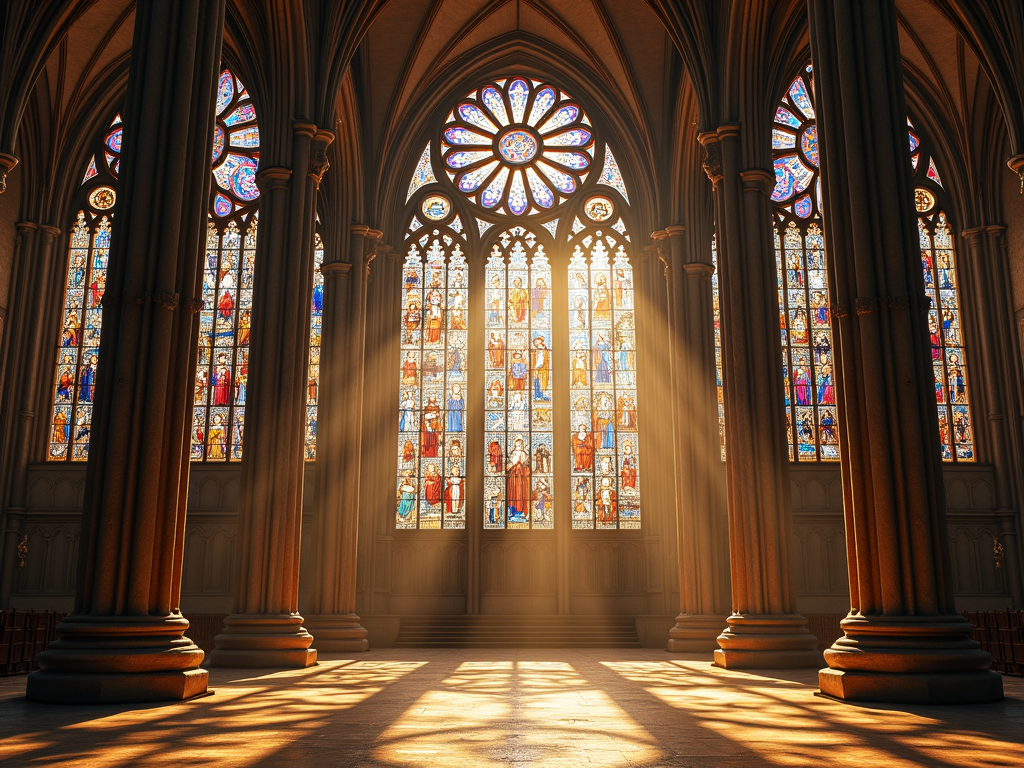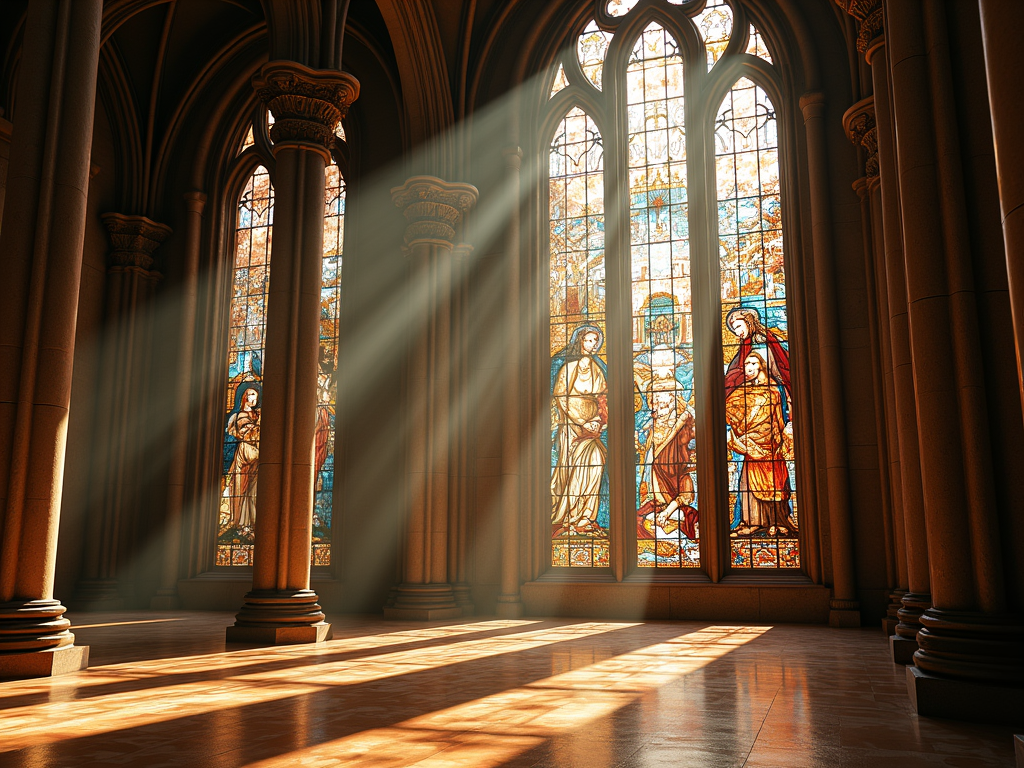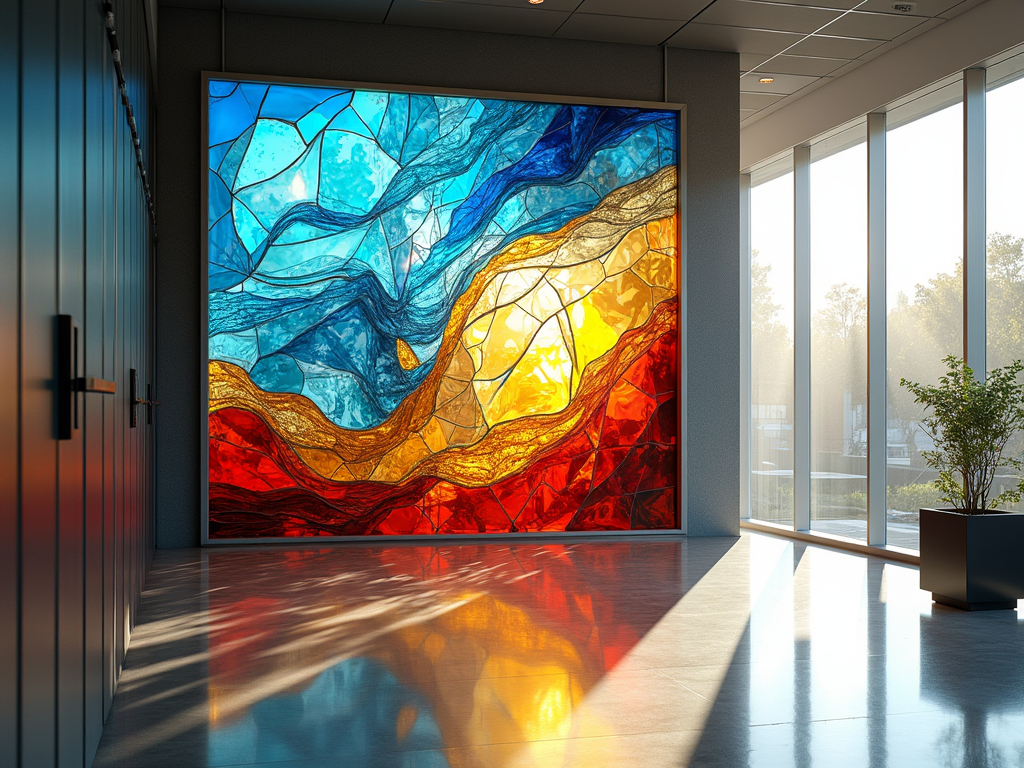
Stained glass art carries a legacy dating back centuries. Its origins in ancient Egypt and Rome blossomed into architectural masterpieces during medieval Europe. From decorative mosaics to the grand narrative windows of Gothic cathedrals, this art form showcases cultural evolution and breakthroughs in design and craftsmanship over time.
Key Takeaways
- Ancient Egypt and Rome: These civilizations laid the foundation for stained glass, using colored glass for decorative objects like mosaics and tiny adornments.
- Middle Ages: Gothic architecture embraced stained glass, introducing plate tracery to create large, detailed windows that vividly portrayed biblical scenes.
- Renaissance Advancements: This period brought depth and perspective to stained glass, allowing artists to craft realistic images with a focus on human themes.
- 19th Century Gothic Revival: Highlighted by Louis Comfort Tiffany’s opalescent glass techniques, this era sparked fresh interest in stained glass art, introducing innovative styles and applications.
- Modern Day: Today’s stained glass combines newer technologies, such as fusing processes and CAD design tools, enabling abstract creations and integration into a variety of settings.
The Golden Age of Stained Glass: The Medieval Period
The medieval period, spanning from the 12th to the 16th centuries, truly marked an era of unmatched innovation and beauty in stained glass art. With the rise of Gothic architecture, cathedrals like Chartres and Notre Dame were adorned with breathtaking stained glass windows that defined their spiritual and aesthetic identity. These windows weren’t just decorations—they were visual storytelling tools that brought biblical narratives and the lives of saints to life for predominantly illiterate audiences. Imagine stepping into a cathedral and seeing the stories of Genesis or the miracles of Christ unfold in radiant colors amplified by sunlight.
The architectural advancements of the time made this possible. Plate tracery, a technique that used thin stone to divide sections of large windows, supported intricate patterns without overwhelming the design. This allowed for grand expanses of stained glass, filling spaces with monumental rose windows and sweeping clerestory installations.
Techniques also evolved during this period. Silver stain, a method that added golden hues through chemical processes, and enamel painting, which enhanced details, gave windows even greater depth and vibrancy. The rose windows of Chartres Cathedral, with their mesmerizing symmetry and jewel-like tones, are a prime example of this craftsmanship. Notre Dame’s massive clerestory windows further highlight how Gothic builders balanced scale with intricate artistry.
To explore how stained glass techniques like these are made or even attempt a DIY stained glass project, you can see how centuries-old innovations still influence today’s creations.

Stained Glass Before the Middle Ages: Ancient Influences
I’ve found that the roots of stained glass art lie far earlier than the grandeur of medieval cathedrals. In ancient Egypt and Rome, artisans crafted colored glass for mosaics and decorative pieces rather than windows. Egyptian craftsmen, for instance, used crushed minerals to give their glass vibrant hues, creating beads and small ornaments that shimmered with light. Roman artisans went a step further by incorporating colored glass into intricate mosaics, laying the groundwork for what would eventually evolve into stained glass as we know it today.
These early uses stood apart from the architectural focus seen later. Instead of serving to fill windows or manipulate light, they prioritized decorative roles. Roman glass artifacts, such as vases and jewelry, offer vivid examples of how colorful glass was a prized material for embellishments.
The first known stained glass window appeared much later, in the 7th century, at St. Paul’s Monastery in Jarrow, England. This window marked a turning point. Unlike the ornamental purposes of ancient Egypt and Rome, this glass was created specifically to enhance an architectural space, allowing light to interact with its color in ways that captivated viewers. While the techniques remained simple compared to those of the Middle Ages, the Jarrow example reveals the transition from decorative items to architectural storytelling through light and color.
To understand how these ancient influences blossomed further, check out this guide on how stained glass is made, tracing the artistry through time.
A Renaissance in Glass: Realism and Drama in the 16th to 18th Centuries
During the Renaissance, stained glass art transformed alongside broader cultural changes. Artists began embracing realism, perspective, and human-centered themes, moving away from the rigid symbolism of medieval religious storytelling. This shift aligned with the principles of Renaissance humanism, which emphasized the individual and the natural world. You could see the difference in stained glass designs, which began featuring lifelike faces, detailed landscapes, and a sense of depth that made the images almost leap out of the glass.
One key innovation from this period was enamel painting. Unlike traditional stained glass, where colors were locked into the glass during its creation, enamel allowed artists to paint finer details directly onto a surface. This technique reduced reliance on the heavily outlined leaded framework, giving works a more fluid and natural composition. Larger glass pieces also became more common, enabling bolder and uninterrupted designs.
The Baroque period took this artistry even further. Drama became the keyword, with plays on light and shadow creating dynamic, theatrical effects. These works often sought to evoke strong emotions, reflecting the broader Baroque love for movement and intensity. As an example, Baroque stained glass frequently used chiaroscuro—the dramatic contrasts between light and dark—to highlight spiritual fervor or heighten the visual impact of religious storytelling.
Michelangelo’s artistic philosophies even found their way into this medium. His focus on the human form and its expressive capabilities influenced stained glass subjects, with elevated attention to anatomy and movement. If you’re curious about how traditional techniques evolved alongside these changes, learn more about how stained glass is made and these groundbreaking methods’ influence on the craft.

Reviving the Craft: Gothic Revival and Tiffany’s Legacy in the 19th Century
The 19th century brought stained glass back into the spotlight, starting with the Gothic Revival. Think of John Ruskin and William Morris, key figures who championed the emotional and spiritual depth of medieval art. Their passion fueled the Arts and Crafts movement, which placed a strong emphasis on craftsmanship and intricate design. Stained glass fit perfectly into this resurgence, blending historical influences with a renewed focus on artistry.
Louis Comfort Tiffany took this tradition and transformed it. His development of opalescent glass changed everything, adding dimension and richness through colors that seemed almost to glow from within. Tiffany’s work wasn’t just about windows; his iconic stained glass lamps became symbols of this artistic evolution. Each lamp, with its vivid hues and flowing shapes, told a story infused with light and texture. His large-scale windows, such as “The Four Seasons,” elevated stained glass into fine art by marrying breathtaking imagery with innovative techniques.
Tiffany’s advancements pushed the craft forward, inspiring future artists to explore creative applications. If you’re curious about these techniques or want to learn how to start your own stained glass projects, check out this helpful guide on DIY stained glass. It’s incredible to see how the legacy of the Gothic Revival and Tiffany’s ingenuity continues to influence modern designs today.
Stained Glass in the Modern World: Expanding Boundaries
Stained glass today goes far beyond churches and cathedrals. It’s now a favorite medium for contemporary artists bringing light and color into homes, offices, and large public spaces. Modern techniques like fusing, slumping, and sandblasting have opened up incredible creative paths, allowing for layered textures, sculptural forms, and intricate details. These methods give artists much more freedom to experiment with bold, abstract designs.
With CAD software, designing stained glass has become far more efficient. I’ve found it’s a game-changer for getting precise layouts and testing colors digitally. It minimizes guesswork and lets creators focus on pushing limits. You’ll see this leap in works like corporate office installations that reflect brand aesthetics or public murals blending art with storytelling. For inspiration or starting your own project, exploring how to make stained glass gives insights into the beauty of the craft.

Sources:
The Stained Glass Association of America
“A History of Stained Glass” by Virginia Chieffo Raguin
“Stained Glass: From its Origins to the Present” by Laurence Lee, George Seddon, and Francis Stephens
“The Art of Stained Glass” by Robert Eberhard
